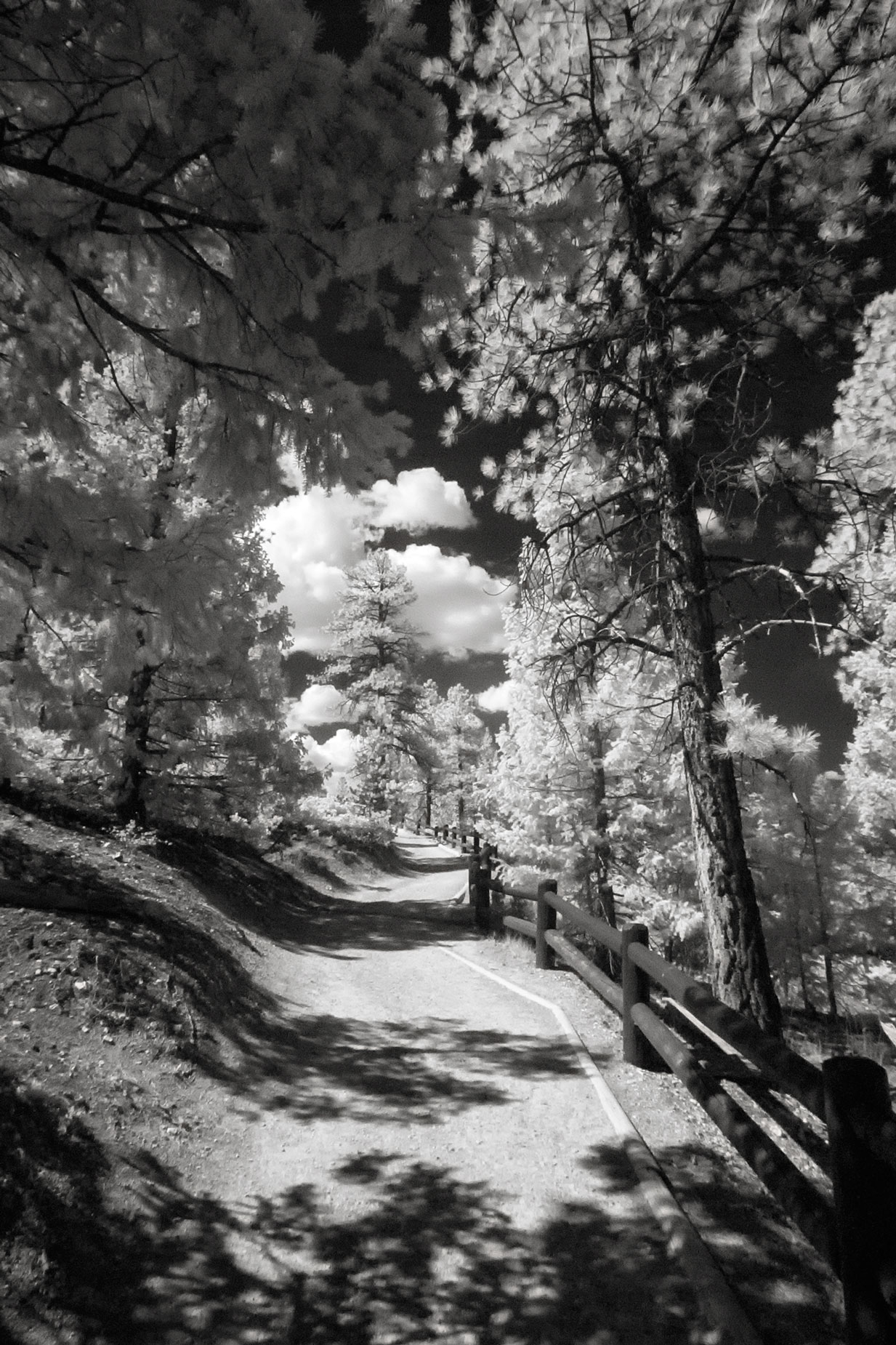Today’s Post by Joe Farace
“Into the forest I go, to lose my mind and find my soul” and “Come to the woods, for here is rest”—John Muir
I’ve often said, and I think that it’s worth repeating, that Zion National Park is one of the best places I’ve found, so far, to make infrared photographs. I have many great memories of shooting there with my wife Mary as part of a SmugMug event on one of my birthdays.
 In 1909, President William Howard Taft named the area Mukuntuweap National Monument in order to protect the canyon. In 1918, the acting director of the newly created National Park Service, Horace Albright, drafted a proposal to enlarge the existing monument and change the park’s name to Zion National Monument, On November 19, 1919, Congress redesignated the monument as Zion National Park and the act was signed by President Woodrow Wilson
In 1909, President William Howard Taft named the area Mukuntuweap National Monument in order to protect the canyon. In 1918, the acting director of the newly created National Park Service, Horace Albright, drafted a proposal to enlarge the existing monument and change the park’s name to Zion National Monument, On November 19, 1919, Congress redesignated the monument as Zion National Park and the act was signed by President Woodrow Wilson
Zion National Park is huge. The 229-square-mile park is located near Springdale, Utah and is a pleasant drive from Denver, The lowest elevation is 3,666 feet at Coalpits Wash and the highest elevation is 8,726 feet at Horse Ranch Mountain. One of the park’s most prominent feature is Zion Canyon, which is 15 miles long and up to a half-mile deep, and is cut through by the North Fork of the Virgin River. The park has a diverse and photogenic geography with a variety of life zones that allow for unusual plants and animals.
How I Made this Photograph: Even a simple path like this, I think, makes a more interesting Infrared photograph than if I had photographed it in color or even in black and white. This original RAW file was captured using a Canon EOS D30 that was converted to infrared capture by a company no longer in business—it took them six months to do the conversion— using a 720nm filter. (The camera worked great though and I made many images with it over the years I owned it.) The lens was a Tamron 11-18mm f/4-5.6 with an exposure of 1/160 and f/14 and ISO 400. The RAW file was opened in Photoshop Camera RAW and converted to black and white using Silver Efex. It was then toned with Color Efex, where it also added an IR glow via it’s Glamour Glow filter.
 Life Pixel does a great job with IR conversions and they have done all of conversions for my Canon DSLRs as well as Panasonic Lumix G-series cameras. This is not a paid or sponsored endorsement, just my experience.
Life Pixel does a great job with IR conversions and they have done all of conversions for my Canon DSLRs as well as Panasonic Lumix G-series cameras. This is not a paid or sponsored endorsement, just my experience.
Used copies of my book, The Complete Guide to Digital Infrared Photography are available used from Amazon for $31.18 as I write this. My book Creative Digital Monochrome Effects has a chapter on IR photography and is available new from Amazon for $19. with used copies starting around seven bucks